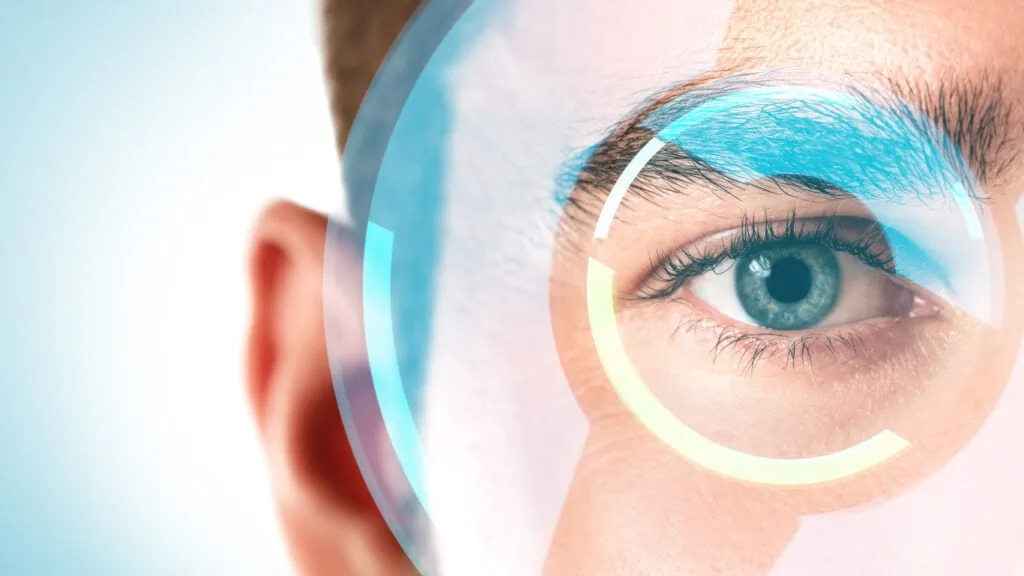How Does Smile Eye Surgery Work?

One laser vision correction procedure available to patients today is SMILE – small incision lenticule extraction – and, in this article, we share an overview of how SMILE eye surgery works to bring vision into focus for people with nearsightedness and astigmatism.
How Long Has SMILE Eye Surgery Been Available?
SMILE was approved here in the U.S. in 2016. However, the procedure has been available in other countries for more than a decade. To date, more than 8 million SMILE procedures have been performed worldwide.
Is SMILE Eye Surgery Safe and Effective?
A significant amount of research – more than 600 clinical studies – support the procedure as both a safe and effective vision correction option for those patients who are good candidates. Some of the most recent data behind SMILE eye surgery include:
- Six months after SMILE eye surgery, 99% of eyes achieved a UCVA of 20/40 or better.
- At 6 months, 84% of eyes had a UCVA of 20/20 or better.
Does SMILE Eye Surgery Hurt?
It is a top priority for the surgeon that the patient is comfortable during the procedure. In addition to some anti-anxiety medication (typically Valium) to help you relax, eye drops are used throughout the surgery to keep the surface of the eye numb and moist to reduce the natural urge to blink. The only thing patients feel during the procedure is some pressure from the instruments used to keep the eye open and still.
Are You Awake During SMILE Eye Surgery?
As in other laser vision correction procedures, patients are awake during the process. The eyelashes are held back to hold the eye open and a contact glass is gently placed on the eye to keep it still.
What Happens in the SMILE Eye Surgery Procedure?
The SMILE eye surgery uses advanced laser vision correction technology – the ultrafast femtosecond laser. This is the same laser used in the first step of the LASIK procedure. The femtosecond laser can penetrate the surface of the eye – the cornea – without disrupting the surface tissue.
- The SMILE procedure uses the laser to create a microthin disc, called a lenticule, within the layers of the cornea. It takes less than 30 seconds for the femtosecond laser to create the lenticule.
- Once the contact lens-shaped disc is created, the lenticule is removed through a very small – typically less than 4 mm – incision in the cornea.
- Once the lenticule is removed, the cornea is reshaped with increased focusing power. The incision is created by the femtosecond laser and heals without any stitches needed.
How Long After SMILE Eye Surgery Will You See Clearly?
After SMILE eye surgery, patients typically see better almost immediately, with vision improving in clarity over 7-10 days as the healing continues. Nearly all SMILE patients are comfortable and able to drive and return to work one day after surgery.
Is SMILE Eye Surgery Right for You?
Figuring out if SMILE laser eye surgery is the right vision correction option for you and your vision begins with a consult with a refractive surgeon, an ophthalmologist with specialized training in the technologies and surgical techniques involved in vision-correcting surgeries. During that consultation, several diagnostic tests are run to ensure your eyes are healthy and your cornea is suitable for surgery in terms of thickness, shape, and overall condition. The results of these tests, in addition to a complete health history including any medications you are taking, are essential to determining if you are a candidate for SMILE eye surgery.
“SMILE eye surgery is an important addition to the spectrum of laser vision correction surgery options for patients,” said John Doane, M.D. of Discover Vision Centers in Kansas City. “With each advancement, more people can find their way to clear vision without relying on glasses and contact lenses.”
There are several options in vision correction procedures for people who are looking for a surgical approach to seeing well without relying on glasses or contact lenses. It is important for those considering their options to work closely with a refractive surgeon. Having a trusting relationship with your eye surgeon, in addition to a thorough evaluation of your eyes and vision to determine your candidacy for SMILE or another laser vision correction procedure, is a great approach to a successful outcome.

